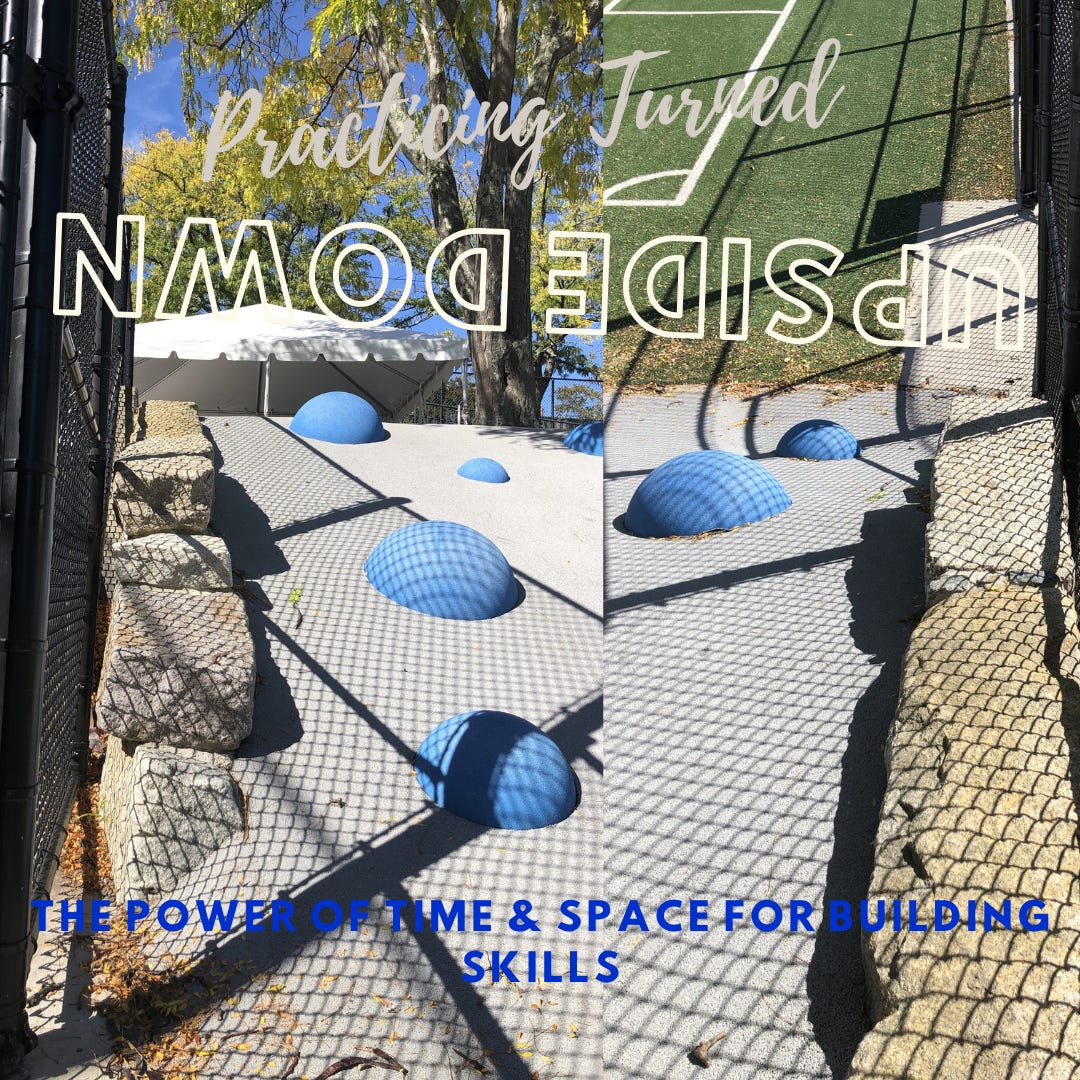
Yesterday the coach brought us down to the lowest field at the playground, had us look at the slope up to the next highest level, then pointed to the row of rough rocks that stacked up to the upper level (picture from bottom and top above.) He said to move up the rocks as quickly as possible without changing speed. You can see in the picture the uneven surface and varying lengths of the plateaus along the way. Running up the slope next to the rocks, no problem. The rocks, well that was another story in my mind.
My instinct was fear. The first fear was not being able to carry out the task. Could I really do that? The second fear was getting hurt.
I didn’t want to be first so I watched a classmate run-up. Then it was my turn. I decided I would take a medium pace and discovered that it wasn’t as hard as it appeared to be. In fact, as I navigated it, I noticed the point where the pitch changed which could cause the speed change, but that is a whole other post (coming soon).
How many times do we look at a piece of music or even a phrase and mentally tag it as “hard”?
We carry this tag into practice and playing. This simple tag causes hesitation and physical bracing that undermines our intention and the work we have put in.
Instead of labeling “hard” be curious. What are the elements of the passage, the piece that I can identify? This helps to make sense of the notes and rhythms on the page and lets the thinking mind relax a bit.
Then approach it from many different perspectives…
Slowly, with style and phrasing of course (ideas on slowing down)
Play the simple line to understand the structural phrase shape
In small chunks
With soft hands (bear paws)
As you weight shift or move to keep the body fluid and flexible
Be creative and curious and leave the “hard” tag behind…



